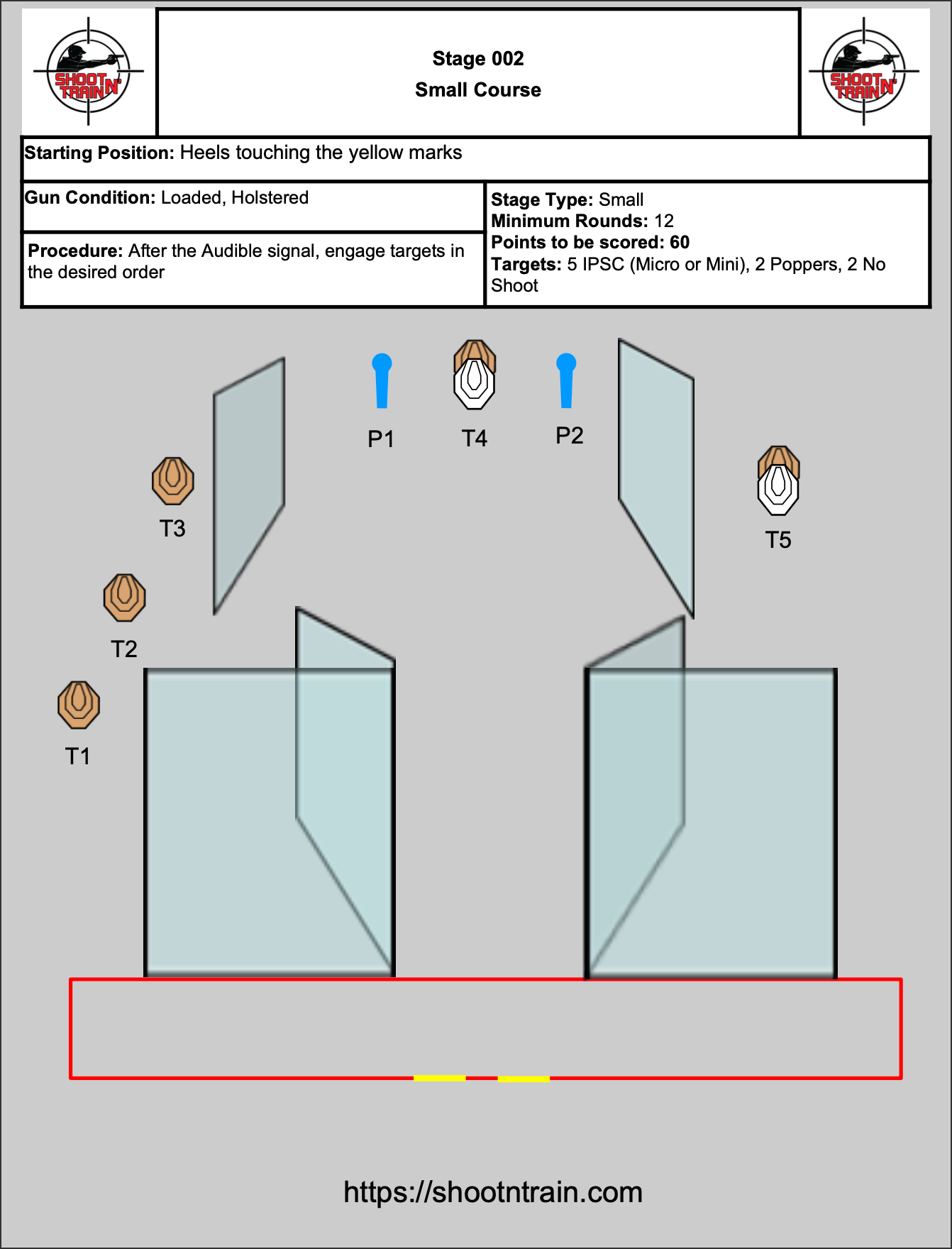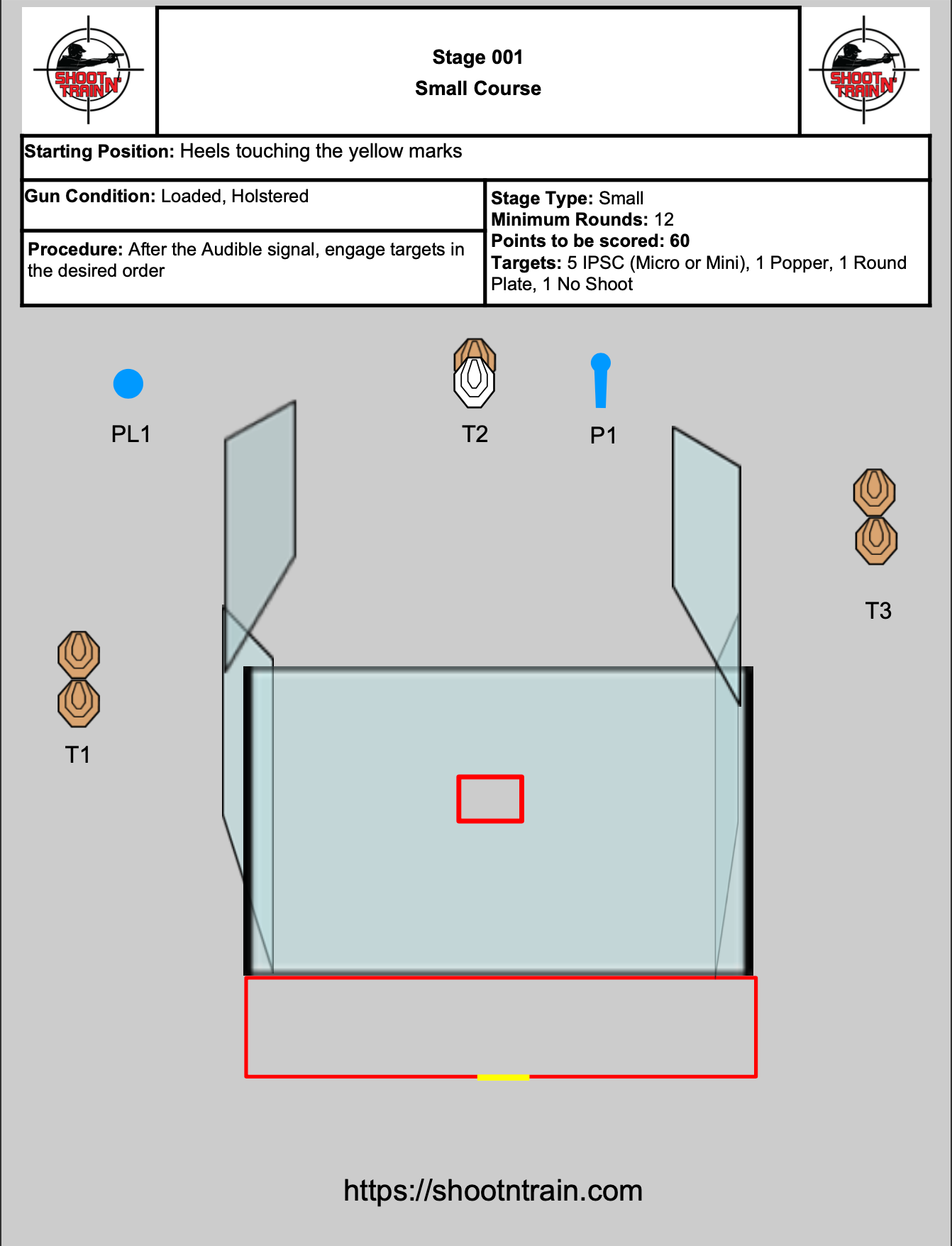
Taking on the Difficulty: Shooting at Moving IPSC Targets Like a Pro
Introduction
Shooting at moving IPSC targets needs an unique set of abilities and expertise. It is a difficult job that demands precision, precision, and fast reflexes. In this post, we will check out the strategies and techniques to shoot at moving IPSC targets like a pro. Whether you are a newbie or a skilled shooter, this guide will supply you with valuable insights and suggestions to enhance your shooting abilities. So let's dive in and embrace the challenge of shooting at moving IPSC targets!
Table of Contents
Taking on the Challenge: Shooting at Moving IPSC Targets Like a Pro
Shooting at moving IPSC targets is a thrilling and demanding undertaking that needs a mix of technical skills, mental focus, and physical dexterity. It pushes shooters to their limitations and challenges them to master a vibrant and hectic environment.
To shoot at moving IPSC targets like a pro, one need to first understand the value of https://storage.googleapis.com/betactical/btactical/uncategorized/quality-matters-why-you-must-buy-top-notch-ipsc.html quality IPSC targets and the function they play in training and competition.
The Value of Quality IPSC Targets
When it pertains to shooting at moving IPSC targets, the quality of the target itself plays an important role in making sure a reasonable and efficient training experience. Inferior or badly created targets can prevent development and result in inaccurate strategy development.
Investing in premium IPSC cardboard targets that are specifically created for movement can substantially improve your training sessions. These targets are constructed to endure repeated impacts, supplying shooters with instantaneous feedback on their shots.
Shoot N' Train IPSC Targets: The Ultimate Training Tool
One of the most popular choices among professional shooters is Shoot N' Train IPSC Targets. These targets provide toughness, flexibility, and realism, making them a perfect option for shooters aiming to improve their skills.
Shoot N' Train IPSC Targets are developed to simulate the movement patterns of real-life targets, providing shooters with a sensible training experience. With adjustable speed settings and programmable sequences, these targets can simulate numerous scenarios, challenging shooters to adapt and react quickly.
Mastering the Basics: Position, Grip, and Sight Alignment
Before trying to shoot at moving IPSC targets, it is necessary to master the fundamentals of shooting. A solid stance, proper grip, and correct sight positioning lay the foundation for accurate and controlled shots.
Your position ought to be steady yet dynamic, allowing you to move smoothly while keeping balance. The isosceles or customized weaver stance is frequently used in IPSC shooting due to its versatility and capability to take in recoil effectively.
Gripping your gun firmly but not excessively tight ensures much better control and reduces muzzle turn. Appropriate sight alignment includes lining up the front and rear sights with the target while maintaining a clear focus on the front sight.
Understanding the Characteristics of Moving IPSC Targets
Moving IPSC targets present an extra layer of complexity to shooting. They can move horizontally or vertically, modification direction suddenly, or differ in speed. Understanding how these elements affect your shots is important for success.
When a target moves horizontally from delegated right (or vice versa), shooters should account for lateral movement by adjusting their objective ahead of the target's course. Likewise, when a target moves vertically (e.g., pop-up targets), shooters need to time their shots precisely to hit the target at its greatest point.
Adjusting Your Shooting Strategy for Moving Targets
Shooting at moving IPSC targets requires adjustments in strategy compared to contending fixed targets. Here are some crucial ideas:
- Maintain a fluid motion: Avoid jerky movements or freezing when engaging moving targets. Rather, develop a smooth rhythm that allows you to track the target seamlessly.
- Follow-through: Continue tracking the target even after shooting your shot. This makes sure that you preserve correct sight alignment and follow the target's movement accurately.
- Trigger control: A regulated and smooth trigger press is important when contending moving targets. Jerking the trigger can trigger your shots to miss or end up being inaccurate.
Anticipating Target Motion: A Key Ability for Success
Anticipating target motion is an ability that separates the typical shooters from the elite. By observing the pattern and speed of the moving IPSC targets, you can predict their future positions and adjust your aim accordingly.
One reliable technique is to concentrate on the target's leading edge instead of its center. This enables you to respond faster and maintain a much better sight image throughout the engagement.
Speed vs Precision: Striking the Perfect Balance
Shooting at moving IPSC targets requires a fragile balance in between speed and accuracy. While it is essential to engage targets quickly, sacrificing precision can lead to missed out on shots and penalties.
To strike this balance, start by focusing on precision during training sessions. As your abilities enhance, gradually increase your speed while preserving accuracy. Remember, accuracy needs to always be prioritized over speed in competitive shooting scenarios.
Shooting on the Move: A Dynamic Approach
In IPSC matches, shooters frequently discover themselves engaging moving targets while on the move themselves. This vibrant shooting method needs coordination, dexterity, and quick decision-making.
When shooting on the move, practice correct footwork to preserve stability and minimize unnecessary movements. Make use of lateral motion methods such as side-stepping or crossover actions to engage multiple targets efficiently.
Engaging Numerous Moving Targets Simultaneously
In IPSC matches, shooters frequently encounter stages with numerous moving targets that require engagement within a minimal timespan. This scenario checks a shooter's capability to shift quickly between targets while preserving accuracy.
To excel in engaging several moving targets simultaneously, develop a systematic technique:

Effectively Utilizing Cover and Concealment
IPSC stages frequently integrate cover and concealment aspects, including an extra layer of intricacy to shooting at moving targets. Proper utilization of cover can offer shooters with a strategic benefit by decreasing exposure and reducing the risk of being hit.
When engaging moving IPSC targets from behind cover, follow these standards:
- Use off-hand shooting methods: If cover limits your ability to shoot with your dominant hand, practice shooting with your off-hand to preserve accuracy.
- Minimize direct exposure time: Engage targets quickly while minimizing the time invested beyond cover. This minimizes the chances of being struck by return fire.
Mental Preparation: Developing Focus and Concentration
Shooting at moving IPSC targets needs psychological fortitude and focus. Establishing a strong state of mind is vital for success in this tough discipline.
Here are some techniques to enhance your mental preparation:
- Visualization strategies: Envision successful engagements of moving targets in your mind before executing them on the variety. This helps build confidence and reinforces correct technique.
- Positive self-talk: Embrace a favorable mindset and change negative thoughts with useful ones. Motivate yourself throughout training sessions and matches to keep motivation and focus.
- Breathing workouts: Deep breathing strategies assist soothe the mind, decrease stress, and enhance shot control. Practice controlled breathing both during training sessions and competitions.
Breathing Strategies for Improved Shot Control
Proper breathing techniques are necessary for maintaining shot control when shooting at moving IPSC targets. Here are two popular breathing methods utilized by professional shooters:
Experiment with these methods throughout training sessions to find which one works best for you.
Shooting Under Pressure: Tension Management Tips
Competitive shooting, specifically in IPSC matches, can be highly difficult and demanding. Shooting under pressure needs managing stress efficiently to keep focus and carry out at your best.
Here are some pointers for handling tension during shooting:
- Develop a pre-shot routine: Developing a consistent pre-shot regular assists create a sense of familiarity and control, reducing anxiety before each engagement.
- Mental rehearsal: Before stepping onto the variety, mentally rehearse each phase and imagine effective executions. This psychological preparation increases confidence and minimizes anxiety.
- Relaxation techniques: Practice relaxation workouts such as deep breathing, progressive muscle relaxation, or mindfulness meditation to calm the mind and body.
Analyzing Your Efficiency: The Significance of Video Review
Video analysis is an important tool for enhancing your shooting abilities when engaging moving IPSC targets. By taping your training sessions or matches, you can identify areas for enhancement and make essential adjustments.
During video evaluation, pay attention to:
- Footwork: Examine the effectiveness of your motion between targets. Try to find any unneeded actions or squandered motions.
- Target acquisition speed: Evaluate how quickly you acquire targets and adjust your aim accordingly.
- Shot positioning: Evaluate the accuracy of your shots on moving targets. Identify any constant errors or patterns that require correction.
Developing a Training Prepare For Moving IPSC Targets
Consistent training Greece based ipsc targets is essential for mastering the art of shooting at moving IPSC targets. To take full advantage of development, establish a structured training plan that focuses on specific abilities and areas of improvement.
Consider incorporating the following components into your training plan:
Incorporating Dry Fire Practice into Your Routine
Dry fire practice is a valuable tool for enhancing shooting abilities without live ammunition. It permits shooters to focus on strategy, trigger control, and sight positioning in a safe environment.
When including dry fire practice into your regimen:
- Ensure a safe environment: Remove all live ammo from the training location and validate that your gun is unloaded.
- Establish clear objectives: Recognize specific aspects of shooting at moving IPSC targets that you wish to improve through dry fire practice.
- Use proper target visualization: Psychologically picture the moving targets as you go through your dry fire routine. This helps reinforce appropriate engagement techniques.
Live Fire Drills to Sharpen Your Skills
While dry fire practice is helpful, live fire drills are essential for developing muscle memory and refining shooting skills with real recoil and target impacts.
Here are some live fire drills to incorporate into your training sessions:

Utilizing Innovation for Boosted Training Sessions
Advancements in technology have reinvented the method shooters train and improve their abilities. Different tools and applications can boost your training sessions when shooting at moving IPSC targets.
Consider utilizing the following technologies:
- Shot timers: These gadgets measure the time it considers you to engage a target properly. They supply instantaneous feedback and assistance track your progress.
- Laser training systems: Laser-based training systems enable you to practice appealing moving targets in a controlled environment. They offer real-time feedback on shot placement and accuracy.
- Mobile applications: A number of mobile apps use virtual shooting ranges, target tracking, and analysis features. These apps can supplement your live fire drills and supply additional training opportunities.
Competing in IPSC Matches: Techniques for Success
Once you have honed your abilities through constant training, you may choose to test your capabilities by participating in IPSC matches. Competing in these events requires not just shooting efficiency but likewise tactical thinking and mental resilience.
Here are some methods for success in IPSC matches:
- Study the phases: Acquaint yourself with the design, target positioning, and movement patterns of each stage before starting.
- Create a stage strategy: Establish a detailed prepare for engaging each target while thinking about motion, reloading points, and any required positional changes.
- Stay calm under pressure: Maintain composure throughout the match by concentrating on your pre-shot routine, breathing techniques, and positive self-talk.
Tips from Leading Shooters in the Field
Learning from experienced shooters is an excellent method to acquire valuable insights and tips for shooting at moving IPSC targets. Here are some ideas from leading shooters:
Common Errors to Prevent when Shooting at Moving IPSC Targets
When finding out a new ability, it is necessary to know typical errors that can hinder development. Here are some mistakes to avoid when shooting at moving IPSC targets:
Overcoming Plateaus: Breaking Through Efficiency Barriers
It is common for shooters to reach plateaus in their skill development journey. These plateaus happen when progress stalls, and improvement becomes stagnant.
To break through efficiency barriers, consider the following techniques:
- Seek expert coaching: A certified trainer can supply tailored feedback and assistance customized to your particular needs.
- Set sensible objectives: Break down your long-lasting objectives into smaller, achievable turning points. Commemorate each milestone as you advance toward your ultimate objective.
- Embrace constant knowing: Stay unbiased and constantly look for brand-new understanding or methods that may enhance your shooting skills.
The Function of Physical Conditioning in Shooting Performance
Physical fitness plays a substantial function in shooting efficiency, consisting of shooting at moving IPSC targets. It adds to total stability, endurance, and dexterity, which are essential for success.
Consider including the following workouts into your fitness routine:
- Cardiovascular training: Take part in activities such as running, cycling, or swimming to improve endurance and lung capacity.
- Strength training: Focus on exercises that target the muscles utilized in shooting, such as the core, arms, and shoulders.
- Flexibility workouts: Maintain versatility through extending routines to improve your capability to assume tough shooting positions.
Frequently Asked Concerns (FAQs)
- It is recommended to use ammo ideal for IPSC matches and certified with range guidelines. Talk to match organizers or variety personnel for particular guidelines.
- The ideal distance depends upon your skill level and the desired difficulty of the drill. Start at a comfy distance and gradually increase it as you become more proficient.
- IPSC matches have particular rules and guidelines governing the engagement of moving targets. Familiarize yourself with these guidelines before taking part in any competitions.
- Improving target acquisition speed needs practice and familiarity with different target movement patterns. Regularly engage moving targets during training sessions to improve your speed and accuracy.
- There are different drills you can incorporate into your training sessions, such as tracking drills, shift drills, and scenario-based drills. Try out different exercises to challenge yourself and improve specific skills.
- The time required to end up being proficient differs depending upon specific aspects such as devotion, training frequency, and prior experience. Constant practice and a structured training plan can accelerate progress.
Conclusion
Shooting at moving IPSC targets is a challenging yet gratifying venture that requires ability, precision, and psychological perseverance. By understanding the dynamics of moving targets, adjusting your shooting technique, and integrating efficient training methods, you can handle the difficulty like a pro.
Investing in quality IPSC targets, such as Shoot N' Train IPSC Targets, improves the realism and efficiency of your training sessions. Mastering the basics, establishing psychological resilience, and utilizing innovation even more raise your shooting skills.
Remember to continually analyze your performance through video review, seek suggestions from skilled shooters, and maintain a structured training plan. With dedication and determination, you can excel in shooting at moving IPSC targets and achieve your goals in this interesting discipline.